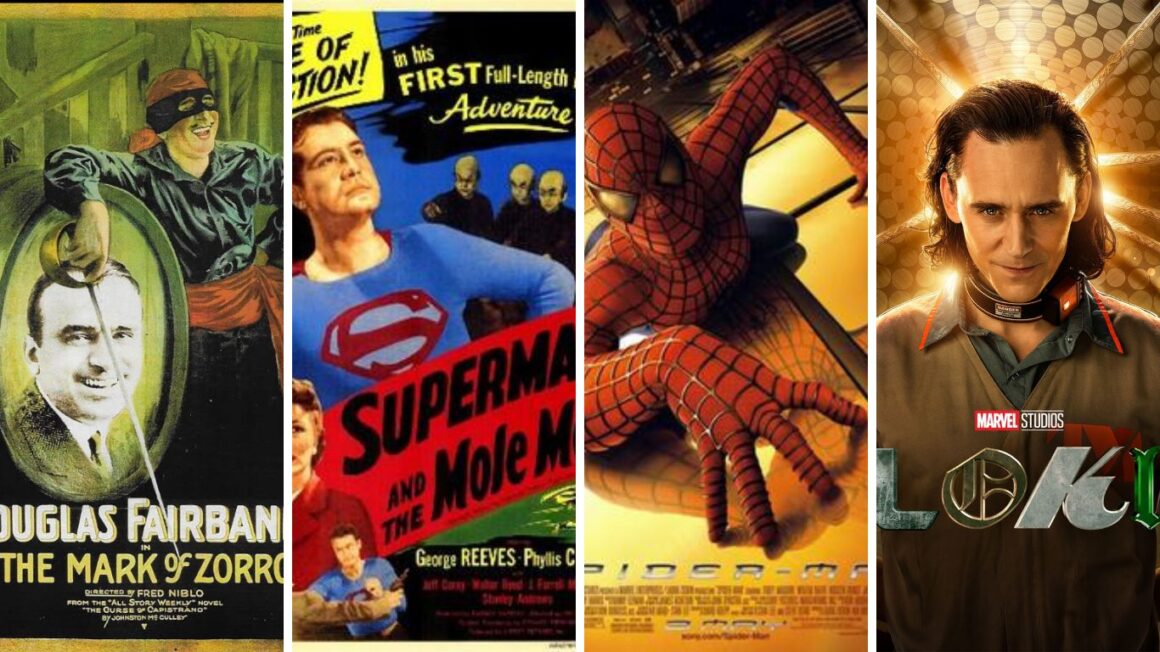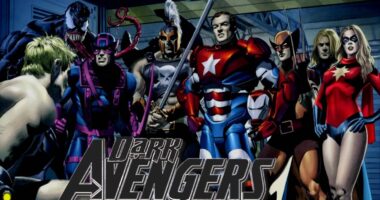The evolution of superhero genres in Hollywood has been a fascinating journey that has spanned over several decades. From the early days of comic books to the current wave of superhero films and TV shows, the genre has undergone significant changes and developments over the years. The history of the superhero genre in Hollywood can be divided into several distinct eras, each with its own unique characteristics and innovations. Each era has contributed to the shaping of the genre, and has laid the foundation for the current superhero genre in Hollywood.
Evolution of Superhero Genres in Hollywood
Silent Film Era (before 1930)

During the Silent Era of cinema, which lasted from the late 1800s to the late 1920s, superhero films were not yet a distinct genre. However, there were a few films that featured characters with superhuman abilities or who performed heroic acts. One of the earliest examples is the 1920 film “The Mark of Zorro,” which is considered to be one of the first versions of the iconic masked vigilante character Zorro. The story of Zorro, who fights against the injustices of the corrupt colonial government set in the Spanish colonial California. Another example is the 1922 film “Robin Hood,” which starred Douglas Fairbanks as the legendary outlaw who uses his skills and cunning to fight against oppression and tyranny. These early superhero films helped lay the foundation for the genre and established the basic elements of the superhero story such as secret identities, costumes and fighting for justice.
Golden Age (1930s-1950s)

During the Golden Age of superhero comics, which lasted from the 1930s to the 1950s, superhero films were not yet a distinct genre. However, there were a few films that featured characters with superhuman abilities or who performed heroic acts. For example, during the 1930s and 1940s, several film serials were produced featuring characters such as Superman, Batman, and Captain America. These serials were short films that were shown in theaters before the main feature, and they typically featured cliffhanger endings to encourage audiences to come back to see the next installment.
Superman and Batman serials were produced in the 1940s. They were not as successful as their comic book counterparts, but they still contributed to the popularization of these characters. However, these serials were not considered as full-length feature films, they were more like a series of short films. They were also not as sophisticated as the comics in terms of special effects and storytelling.
The live-action film adaptations of the superhero comic books during this era were not considered as serious productions and were mainly aimed at children. These films were not as successful as the comics and did not have the same cultural impact as the comics, which makes sense given that during that time comics were much more popular than movies. Note able movies of this era are The Bold Caballero (1936) which is a story about the Zorro, The Spider’s Web (1938).
The Silver Age (1950s-1970s)

The Silver Age of superhero comics, which lasted from the 1950s to the 1970s, saw a renewed interest in comics and a focus on science fiction and fantasy elements. This era was marked by a shift away from the more simplistic and formulaic stories of the Golden Age and towards more complex and socially relevant story lines.
During this era, new characters like The Flash and Green Lantern were introduced, as well as the creation of popular superhero teams like the Justice League and the Avengers. These characters and teams represented a new generation of superheroes that were more diverse in terms of their backgrounds and abilities, and they tackled more complex and socially relevant themes.
The Silver Age also saw a greater emphasis on science fiction and fantasy elements, with many stories featuring characters with extraordinary abilities, such as super strength or the ability to fly. This era also saw an increase in the use of technology and science fiction concepts, such as alien invasions, time travel, and inter dimensional travel. Some of the movies this era were the first Atom Man vs. Superman (1950), and it was a moderate success at the box office, but it was not as successful as the comics. The film was followed by a sequel, Superman and the Mole Men (1951).
The Bronze Age (1970s-1990s)

This era is characterized by a more mature and realistic approach to comics, with more complex and socially relevant story lines. The bronze era saw a shift away from the more fantastical and science fiction-heavy stories of the Silver Age, and towards more grounded and realistic stories that tackled more mature themes such as crime, social issues, and politics.
During this era, new characters like Daredevil and The Punisher were introduced, who were known for their grittier and more violent approach to fighting crime. This era also saw the emergence of independent comic book companies, such as Marvel and DC, which produced comics with more mature story lines and characters.
Comics began to be seen as more than just children’s entertainment, and they started to attract a more adult audience. This era also saw the rise of comics that were more socially conscious and reflective of the world.
The Bronze Age of superhero comics was a time of great innovation and creativity, and it laid the foundation for the genre to continue to evolve and adapt to the changing cultural landscape. This era also marked a turning point in the genre’s development and it would continue to evolve and mature in the following era, the Modern Age. Movies like Superman (1978) , Superman II (1981), Superman III (1983), The Punisher (1989).
The Modern Age (1990s-2010s)

The Modern Age of superhero comics, which lasted from the 1990s to the 2010s, saw a significant increase in the adaptation of comics into successful film franchises like X-Men and Spider-Man. This era also marked a major turning point in the history of superhero films. Studios began to invest heavily in the genre, and as a result, the quality and popularity of superhero films soared.
The creation of Marvel Studios and the emergence of the Marvel Cinematic Universe (MCU) was a major development in the genre. The MCU, which began with the release of “Iron Man” in 2008, brought together several Marvel characters in a shared cinematic universe, and it was a major success both commercially and critically. This paved the way for other studios to follow suit and create their own shared cinematic universes, like the DC Extended Universe (DCEU).
This era saw a significant increase in the diversity and representation in superhero stories, with more inclusive casting, themes and story lines. This era also saw the emergence of more complex and nuanced characters, and the stories became more grounded and realistic.
Some of the movies of this era are The Fantastic Four (1994), Generation X (1996), Nick Fury: Agent of SHIELD (1998), Blade (1998), X-Men (2000), Blade II (2002), Spider-Man (2002).
The Streaming Era (2010s-Current)

The Streaming Era, which began in the 2010s and is the current era, is characterized by the emergence of streaming platforms such as Disney+ and Netflix, which has allowed for the creation of more superhero TV shows. This era has also seen an increase in the number of superhero stories being told across different platforms.
The Streaming Era has allowed for more diverse and inclusive representation in superhero stories, with more characters of different races, genders, sexual orientations, and abilities being featured in leading roles. This era has also seen more complex and nuanced characters and stories, and it has allowed for more flexibility in terms of storytelling and pacing, as TV shows can be longer and more serialized than movies.
One of the most notable examples of a superhero TV show from the Streaming Era is “The Umbrella Academy,” which is based on a comic book series of the same name, and it premiered on Netflix in 2019. Another notable example is Loki, and She Hulk.
The Streaming Era of superhero comics has been a time of great innovation and creativity, and it has allowed for the genre to continue to evolve and adapt to the changing cultural landscape, and it has also allowed for the genre to reach a wider audience. This era has also marked a turning point in the genre’s development, and it is expected that the genre will continue to evolve in the future.
Also Read: Evolution of Female Superheroes



